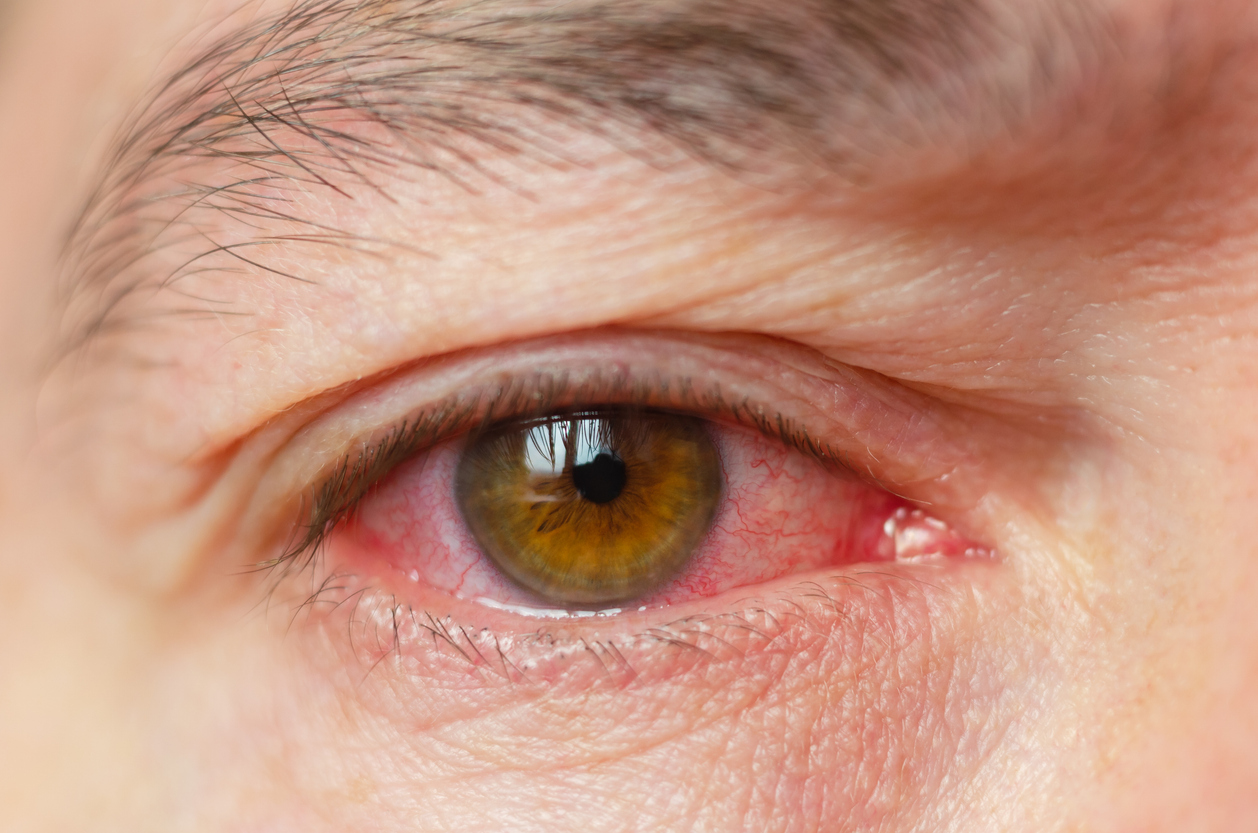Relationship Between Crohn’s Disease and Ocular Complications
Introduction
Crohn’s disease, a chronic inflammatory disorder primarily affecting the gastrointestinal tract, is renowned for its diverse array of symptoms ranging from abdominal pain to diarrhea. However, what often goes unnoticed is its potential impact on ocular health. In this extensive exploration, we will delve into the intricate interplay between Crohn’s disease and various ocular complications, unraveling their nuanced symptoms, underlying mechanisms, and multifaceted management strategies.
Uveitis
- Description: Uveitis, characterized by inflammation of the uvea—the middle layer of the eye comprising the iris, choroid, and ciliary body—is among the most prevalent ocular manifestations of Crohn’s disease.
- Symptoms: Those afflicted with uveitis often experience a spectrum of symptoms, including eye pain, redness, heightened light sensitivity (photophobia), blurred vision, and the perception of floaters or spots.
- Mechanism: Although the precise mechanisms linking Crohn’s disease to uveitis remain elusive, it is widely postulated that aberrant immune responses characteristic of Crohn’s disease may instigate inflammatory processes in both the gastrointestinal tract and the eyes.
- Management: Treatment modalities typically entail the administration of corticosteroid eye drops to mitigate ocular inflammation. In severe instances, systemic immunosuppressive agents may be warranted. Regular monitoring by an ophthalmologist is indispensable for early detection of complications and preservation of visual integrity.
Episcleritis and Scleritis
- Description: Episcleritis and scleritis denote inflammation of the episclera (the thin, outer layer covering the sclera) and the sclera (the white, fibrous outer layer of the eye), respectively.
- Symptoms: Manifestations encompass ocular redness, tenderness, discomfort, and, occasionally, visual disturbances. Scleritis, in particular, can escalate to severe levels and may correlate with systemic inflammation seen in Crohn’s disease.
- Mechanism: Analogous to uveitis, episcleritis and scleritis are hypothesized to arise from immune-mediated inflammation prompted by Crohn’s disease.
- Management: Addressing underlying inflammation through corticosteroid eye drops or systemic immunosuppressive medications forms the crux of treatment, tailored to the severity and systemic involvement.
Dry Eye Syndrome
- Description: Crohn’s disease can precipitate dry eye syndrome—a condition characterized by inadequate tear production or compromised tear quality, resulting in ocular discomfort and irritation.
- Symptoms: Clinical features encompass sensations of stinging or burning in the eyes, excessive tearing, ocular redness, a gritty sensation, and intermittent blurring of vision.
- Mechanism: Chronic inflammation associated with Crohn’s disease may impinge upon the lacrimal glands responsible for tear secretion, thereby diminishing tear volume and quality.
- Management: Management strategies focus on symptomatic relief and enhancement of tear film stability through the use of artificial tears, lubricating ointments, and lifestyle modifications such as maintaining optimal hydration levels and steering clear of environmental triggers.
Conjunctivitis and Keratitis
- Description: Recurrent episodes of conjunctivitis (inflammation of the conjunctiva) and keratitis (inflammation of the cornea) are commonplace in individuals grappling with Crohn’s disease, often causing discomfort and visual disturbances.
- Symptoms: Symptoms entail ocular redness, itching, tearing, discharge, sensation of a foreign body, and, sporadically, visual blurring.
- Mechanism: The etiology of conjunctivitis and keratitis in Crohn’s disease may stem from systemic inflammation or direct extension of inflammation from neighboring structures.
- Management: Interventions encompass topical corticosteroids, antibiotics (if bacterial infection is concurrent), and supportive measures aimed at assuaging symptoms and fostering corneal healing.
Conclusion
Crohn’s disease transcends its gastrointestinal manifestations to exert a profound influence on ocular health, giving rise to an array of conditions such as uveitis, episcleritis, scleritis, dry eye syndrome, conjunctivitis, and keratitis. Timely recognition and management of these ocular complications are pivotal in forestalling vision-threatening sequelae and optimizing the quality of life for individuals navigating the complexities of Crohn’s disease. A collaborative approach involving gastroenterologists, ophthalmologists, and allied healthcare professionals is indispensable for the holistic management and attainment of favorable outcomes in patients grappling with Crohn’s disease and its associated ocular morbidities.
World Eye Care Foundation’s eyecare.live brings you the latest information from various industry sources and experts in eye health and vision care. Please consult with your eye care provider for more general information and specific eye conditions. We do not provide any medical advice, suggestions or recommendations in any health conditions.
Commonly Asked Questions
Individuals with Crohn’s disease should undergo regular comprehensive eye examinations, at least annually or more frequently if experiencing symptoms or as recommended by their healthcare provider. Early detection is key to effective management.
While ocular complications of Crohn’s disease can cause temporary vision changes, prompt diagnosis and management can help prevent long-term vision loss. However, severe cases may lead to permanent damage if left untreated.
Symptoms such as eye pain, redness, light sensitivity, blurred vision, and changes in tear production should prompt evaluation by an eye care professional for possible ocular complications associated with Crohn’s disease.
Management strategies may include using corticosteroid eye drops, systemic immunosuppressive medications, lubricating eye drops, and avoiding environmental triggers. Regular monitoring by an ophthalmologist is crucial.
Keratitis, inflammation of the cornea, can occur in individuals with Crohn’s disease either due to systemic inflammation or as a result of secondary infection. Symptoms include eye redness, discomfort, and blurred vision.
Yes, individuals with Crohn’s disease may experience recurrent episodes of conjunctivitis, an inflammation of the conjunctiva, resulting in symptoms like eye redness, itching, and tearing.
Episcleritis and scleritis are inflammations of the outer layers of the eye, often seen in individuals with Crohn’s disease due to immune system dysregulation. They can cause eye redness, tenderness, and pain.
Yes, chronic inflammation associated with Crohn’s disease can impact tear production and quality, leading to dry eye syndrome characterized by symptoms such as eye discomfort and blurred vision.
Uveitis is inflammation of the uvea, which can occur in individuals with Crohn’s disease due to shared immune-mediated mechanisms. It can cause symptoms like eye pain, redness, and blurred vision.
Yes, Crohn’s disease can lead to various eye problems, including inflammation of the uvea, episcleritis, scleritis, dry eye syndrome, conjunctivitis, and keratitis.
news via inbox
Subscribe here to get latest updates !








